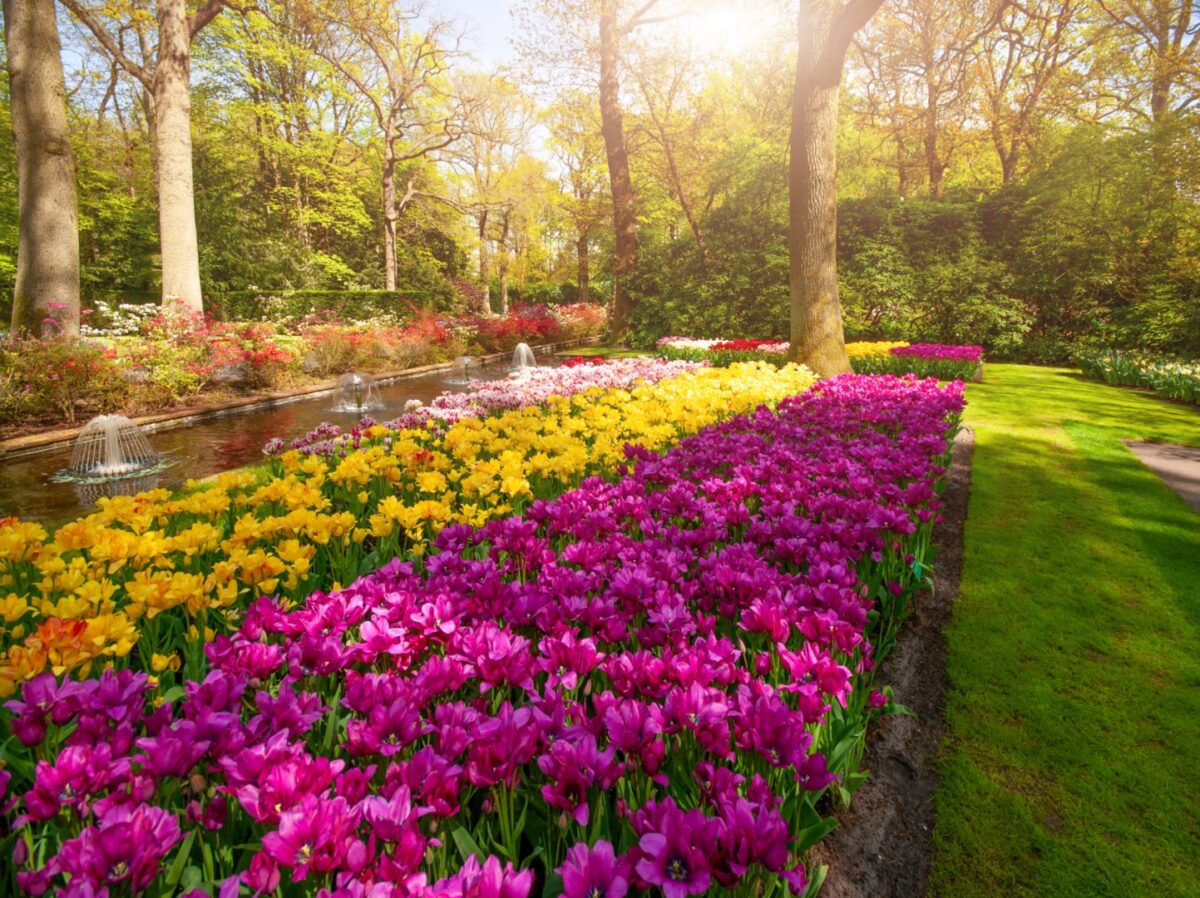Planting Annuals by Color

Posted on March 3, 2023 by Jeremiah Sooter
Have you ever wondered how city parks & recreation departments organize annual plants by color? From a stunning array of flowering annuals to plant foliage, you too can beautify the view from your window that attracts pollinators; revitalizes habitat for animals, birds, and insects; and makes an eye-catching display for your neighbors.
Today’s blog will provide a step-by-step guide to planting annuals by color to make a spectacular lawn statement. To begin, you’ll need a color wheel, a plant list, a sketch of your garden plans, and these all-important garden tools:
- Hand rake and shovel
- Wheelbarrow and lawn bags
- Seeds and starter plants of your choice
Color Wheel
A color wheel is an excellent tool when planting by color. That’s because there are three approaches to color: complementary, analogous, and triadic.
The first two, complementary and analogous, are the most popular approaches to color use. Triadic color schemes, sometimes called split-complementary colors, are split between three colors.
Complementary Color Schemes
Complementary colors are a great way to create a bold, eye-catching display. Those colors that complement one another are opposite on a color wheel.
- Blue and orange
- Yellow and violet
- Red and green
These colors can emphasize specific features in your yard, like across the top of a berm. Home gardeners and landscapers can create striking color combinations that draw the eye and invoke spectator emotion by utilizing complementary colors.
Analogous Color Schemes
On the other hand, analogous colors neighbor each other on a color wheel, like blue to violets, greens to yellows, and red to orange. One of the most exciting aspects of color is that similar colors share many attributes, such as brightness, hue, saturation, and value.
By understanding how these characteristics affect color perception, gardeners and landscapers can create stunning visuals that dazzle and delight to create aesthetically pleasing designs.
Triadic Color Schemes
The term triad implies a group of three; in the case of a triadic color scheme, that means three colors. But only one of those colors is the prime member, while the other two are complementary. A few good examples are:
- When using red as the principal color, yellow and blue are the secondary colors.
- If blue is the dominant color, red and yellow are the supporting colors.
- Make yellow the primary color; then blues and reds become the accessorizing colors.
Garden Sketch Plan
Begin by cleaning the garden space and removing debris, weeds, and anything that might get in the way before you start planting. Next, use your garden sketch to carve out the areas you’ve identified for specific plants or flower colors.
For starter plants, remember to dig a hole large enough for the plant’s root ball and one to two inches deeper than the height of the pot or container. Make sure you fill your space halfway with compost, add more soil to cover the plant roots and use a granular fertilizer around the top.
Plant List, Seeds, and Starters
Finally, using your plant list and garden sketch, lay out the seed packets and starter plants where you’ve carved out space in the soil to keep you on track with what gets planted first. Plant from the back to the front or top-down if you are planting atop a berm.
Although there is no hard and fast rule for color usage in landscaping, there is one safe bet to live by for plant type, the rule of three. Many professional landscapers recommend planting at most three of the same plant type in a series. That ensures you don’t overweight any one zone in your garden or yard, and you create greater visual appeal and texture too.
Hire A Local Landscaping Team
If you’re looking for some landscaping help, look toward the landscaping experts at Ground Up Services in Carthage, MO. Their team of professionals has fifteen years of experience in landscaping services. They can also assist you with additional lawn care and drainage services.
Contact the team at Ground Up Services LLC today by calling (417) 439-1009, or schedule a landscaping consultation online!